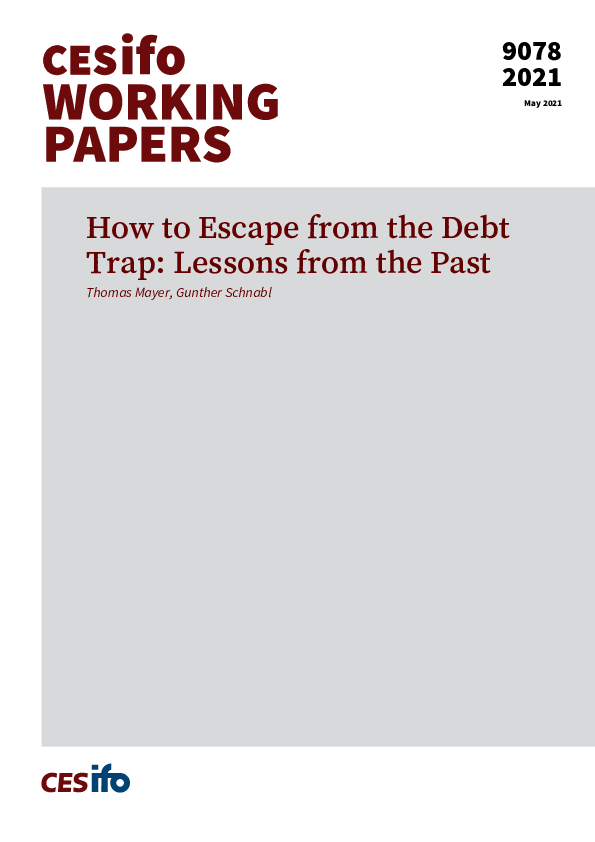How to Escape from the Debt Trap: Lessons from the Past
CESifo, Munich, 2021
CESifo Working Paper No. 9078

Rising public debt everywhere has raised the question of how to reduce debt again in the future. High public debt also seems to be an impediment for the exit of central banks from ultra-low interest rates and quantitative easing. Historical precedents and proposals have included austerity, haircuts and the generation of inflation. Each way has advantages and disadvantages, including uncertainty about effects and side-effects. We approach the issue from an historical perspective, based on case studies of prominent approaches to debt reduction. We analyze debt reduction through economic austerity in Italy, hyperinflation in Germany after World War I, inflation in Argentina since the 1980s, currency reform in Germany after WW II, and financial repression in the United States and the United Kingdom after WW II. Finally, we discuss Ronald McKinnon’s order of economic and financial liberalization as well as the Chicago Plan combined with the introduction of central bank digital currencies as an option for the future.